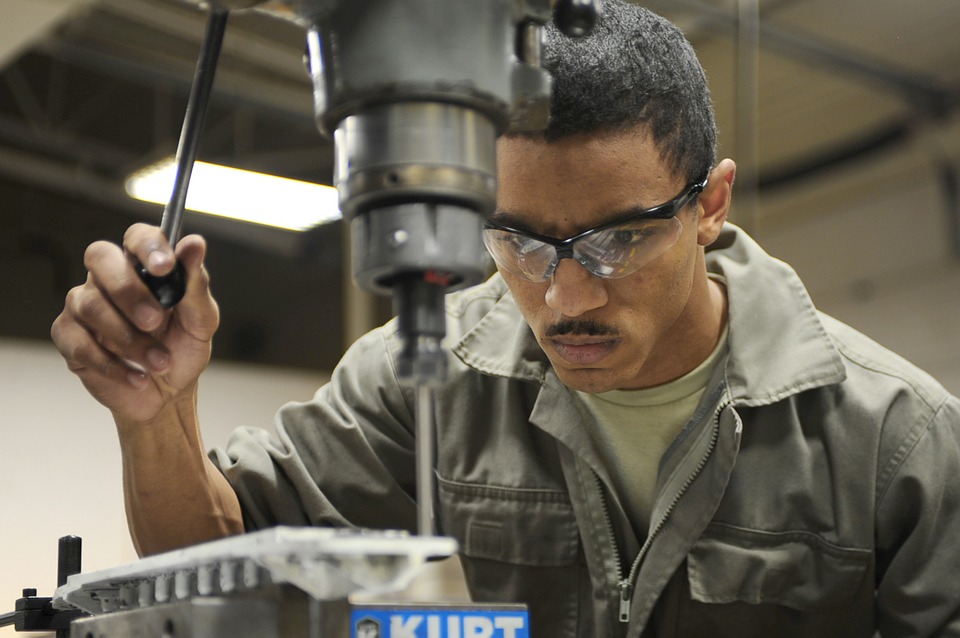
There’s an important role for government to play in strengthening manufacturing.
The post below is written by Mike Russo, chair of the Executive Committee of MForesight: The Alliance for Manufacturing Foresight and corporate lead for Government and Regulatory Affairs at GlobalFoundries, a leading semiconductor manufacturer.
In an age in which Republicans and Democrats can scarcely agree on anything, Washington has reached a surprisingly strong consensus on a crucial point: We need manufacturing jobs.
President Trump called the restoration of manufacturing the most important promise of his campaign. Former President Barack Obama called manufacturing a top policy priority and a ticket to creating good middle class jobs.
Good intentions matter. But policies matter more. As three decades of history demonstrate, keeping and restoring manufacturing jobs is incredibly difficult. Still — with a comprehensive strategy that focuses on skills and technology — it’s possible to strengthen American manufacturing.
There’s a sensible and responsible role for government to play in helping American regions and economic sectors acquire the knowledge, skills, and infrastructure needed to attract and retain production and to seed and grow new industries.
The manufacturing sector has lost more than 5 million jobs since 2000. While the media narrative tends to focus on automation and robotics as causes of the problem, there's a much clearer culprit: offshoring. The Commerce Department reports major US-based multinational corporations (which employ one-fifth of all American workers) cut their domestic workforces by 2.9 million while increasing their overseas employment by 2.4 million in the last decade. The vast majority of these jobs were low-skill and were outsourced to low-wage countries.
To its credit, the new administration has placed an admirable focus on restoring US manufacturing, creating a first-of-its-kind Manufacturing Council at the White House, using the bully pulpit as a tool to deter offshoring, and, most notably, seeking to cut taxes and regulations with an eye toward business growth.
Still, we can't cut our way to growth and competitiveness. We need to sustain investments that will help us save existing manufacturing jobs and create new ones.
There’s a sensible and responsible role for government to play in helping American regions and economic sectors acquire the knowledge, skills, and infrastructure needed to attract and retain production and to seed and grow new industries. A crucial way to do this is to invest in initiatives that leverage the collective strengths of the public and private sectors to support manufacturing ecosystem development and innovation.
A prime example: Manufacturing USA, which consists of multiple Manufacturing Innovation Institutes that focus primarily on developing and commercializing manufacturing technologies. While private firms invest heavily in applied research, there’s often a dearth of crucial “translational” research aimed at turning new discoveries and inventions into productive and useful new technologies and products.
Being good at basic science is necessary but not sufficient — we also need to transform new discoveries and inventions into products, processes, and high-wage jobs. Government can, in collaboration with industry and academic partners, help look out for the long-term.
Similarly, there’s a role for smart public-private partnerships that help create the conditions for US firms — particularly small-and-medium-sized ones — to succeed. The Manufacturing Extension Partnership (MEP) plays an important role in this regard.
Built on 1:1 cost-matching with outside partners including states, universities and nonprofit organizations, the MEPs serve as business and technical advisers to assist manufacturers in all 50 states and Puerto Rico.
MEPs connect new startups with manufacturers and means to bring products to market, and they help organizations of all sizes to adopt new technologies and processes and to ensure competitiveness. It’s a demonstrated winning proposition for taxpayers, as the MEPs generate more than $17 in new sales growth for manufacturers and $27 in new client investment for every one dollar of federal investment.
The political will is there. Decision-makers across the ideological spectrum want to restore and expand America’s manufacturing sector.
But there’s some disagreement as to the strategy. Both parties can and should come together to support a comprehensive approach, anchore
At a time when other nations are out spending the United States when it comes to investing in research and development, along with growing manufacturing and the related supply chain, it’s not enough to focus on stopping the loss of old manufacturing jobs. We also need to invent new ones.
